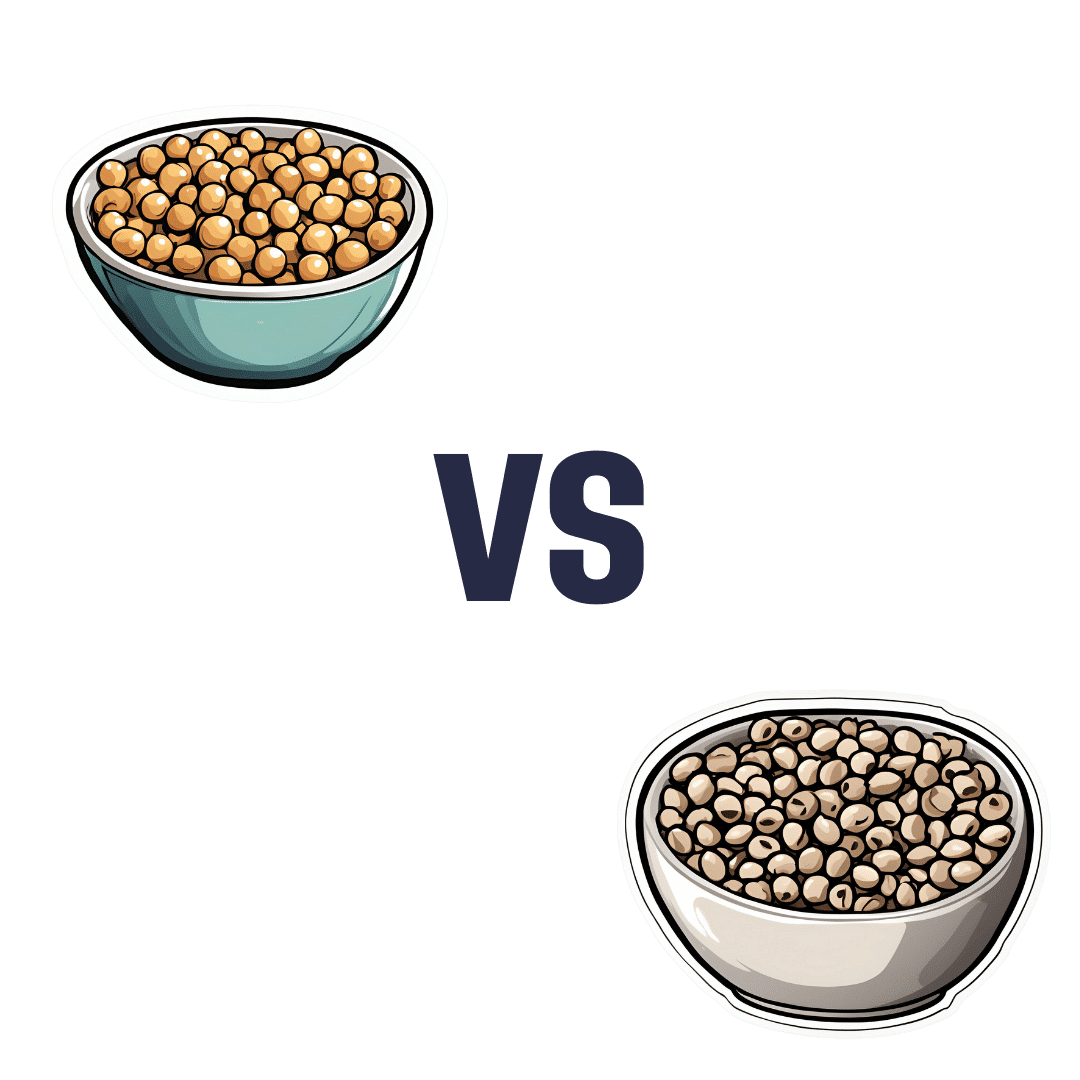
The Real Reason Most Women Don’t Lose Belly Fat
10almonds is reader-supported. We may, at no cost to you, receive a portion of sales if you purchase a product through a link in this article.
Notwithstanding the title, this does also go for men too, by the way—while hormones count, they count differently. People with an estrogen-based metabolism (so usually: women) will usually have more body fat, which can make it harder to get visible muscletone, for those who want that. But people with a testosterone-based metabolism (so usually: men) will have different fat storage patterns, and belly-fat is more testosterone-directed than estrogen-directed (estrogen will tend to put it more to the thighs, butt, back, breasts, etc).
So the advice here is applicable to all…
Challenges and methods
The biggest barrier to success: many people give up when results are not immediate, especially if our body has been a certain way without change for a long time.
- “Oh, I guess it’s just genetics”
- “Oh, I guess it’s just age”
- “Oh, I guess it’s just because of [chronic condition]”
…and such things can be true! And yet, in each of the cases, persisting is still usually what the body needs.
So, should we give ourselves some “tough love” and force ourselves through discomfort?
Yes and no, Lefkowith says. It is important to be able to push through some discomfort, but it’s also important that whatever we’re doing should be sustainable—which means we do need to push, while also allowing ourselves adequate recovery time, and not taking unnecessary risks.
In particular, she advises to:
- remember that at least half the work is in the kitchen not the gym, and to focus more on adding protein than reducing calories
- enjoy a regular but varied core exercise routine
- stimulate blood flow to stubborn areas, which can aid in fat mobilization
- focus on getting nutrient-dense foods
- prioritize recovery and strategic rest
For more details on these things and more, enjoy:
Click Here If The Embedded Video Doesn’t Load Automatically!
Want to learn more?
You might also like to read:
Visceral Belly Fat: What It Is & How To Lose It
Take care!
Don’t Forget…
Did you arrive here from our newsletter? Don’t forget to return to the email to continue learning!
Recommended
Learn to Age Gracefully
Join the 98k+ American women taking control of their health & aging with our 100% free (and fun!) daily emails:
-
Seven Things To Do For Good Lung Health!
10almonds is reader-supported. We may, at no cost to you, receive a portion of sales if you purchase a product through a link in this article.
YouTube Channel Wellness Check is challenging us all to do the following things. They’re framing it as a 30-day challenge, but honestly, there’s nothing here that isn’t worth doing for life
Here’s the list:
- Stop smoking (of course, smoking is bad for everything, but the lungs are one of its main areas of destruction)
- Good posture (a scrunched up chest is not the lungs’ best operating conditions!)
- Regular exercise (exercising your body in different ways exercises your lungs in different ways!)
- Monitor air quality (some environments are much better/worse than others, but don’t underestimate household air quality threats either)
- Avoid respiratory infections (shockingly, COVID is not great for your lungs, nor are the various other respiratory infections available)
- Check your O2 saturation levels (pulse oximeters like this one are very cheap to buy and easy to use)
- Prevent mucus and phlegm from accumulating (these things are there for reasons; the top reason is trapping pathogens, allergens, and general pollutants/dust etc; once those things are trapped, we don’t want that mucus there any more!)
Check out the video itself for more detail on each of these items:
Click Here If The Embedded Video Doesn’t Load Automatically!
Want to know more?
You might like our article about COPD:
Why Chronic Obstructive Pulmonary Disease (COPD) Is More Likely Than You Think
Take care!
Share This Post
-
The push for Medicare to cover weight-loss drugs: An explainer
10almonds is reader-supported. We may, at no cost to you, receive a portion of sales if you purchase a product through a link in this article.
The largest U.S. insurer, Medicare, does not cover weight-loss drugs, making it tougher for older people to get access to promising new medications.
If you cover stories about drug costs in the U.S., it’s important to understand why Medicare’s Part D pharmacy program, which covers people aged 65 and older and people with certain disabilities, doesn’t cover weight-loss drugs today. It’s also important to consider what would happen if Medicare did start covering weight loss drugs. This explainer will give you a brief overview of the issues and then summarize some recent publications the benefits and costs of drugs like semaglutide and tirzepatide.
First, what are these new and newsy weight loss drugs?
Semaglutide is a medication used for both the treatment of type 2 diabetes and for long-term weight management in adults with obesity. It debuted in the United States in 2017 as an injectable diabetes drug called Ozempic, manufactured by Novo Nordisk. It’s part of a class of drugs that mimics the action of glucagon, a substance that the human body makes to aid digestion.
Glucagon-like peptide-1 (GLP-1) drugs like semaglutide help prompt the body to release insulin. But they also cause a minor delay in the pace of digestion, helping people feel sated after eating.
That second effect turned Ozempic into a widely used weight-loss drug, even before the Food and Drug Administration (FDA) gave its okay for this use. Doctors in the United States can prescribe medicines for uses beyond those approved by the FDA. This is known as off-label use.
In writing about her own experience in using the medicine to help her shed 40 pounds, Washington Post columnist Ruth Marcus in June noted that Novo Nordisk mentioned the potential for weight loss in its “ubiquitous cable ads (‘Oh-oh-oh, Ozempic!’)”
The American Society of Health-System Pharmacists has reported shortages of semaglutide due to demand, leaving some people with diabetes struggling to find supply of the medicine.
Novo Nordisk won Food and Drug Administration (FDA) approval in 2021 to market semaglutide as an injectable weight loss drug under the name Wegovy, but with a different dosing regimen than Ozempic. Rival Eli Lilly first won FDA approval of its similar GLP-1 diabetes drug, tirzepatide, in the United States in 2022 and sells it under the brand name Mounjaro.
In November of 2023, Eli Lilly won FDA approval to sell tirzepatide as a weight-loss drug, soon-to-be marketed under the brand name Zepbound. The company said it will set a monthly list price for a month’s supply of the drug at $1,059.87, which the company described as 20% discount to the cost of rival Novo Nordisk’s Wegovy. Wegovy has a list price of $1,349.02, according to the Novo Nordisk website.
Even when their insurance plans officially cover costs for weight loss drugs, consumers may face barriers in seeking that coverage for these drugs. Commercial health plans have in place prior authorization requirements to try to limit coverage of new weight-loss shots to those who qualify for these treatments. The Wegovy shot, for example, is intended for people whose weight reaches a certain benchmark for obesity or who are overweight and have a condition related to excess weight, such as diabetes, high blood pressure or high cholesterol.
State Medicaid programs, meanwhile, have taken approaches that vary by state. For example, the most populous U.S. state, California, provides some coverage to new weight-loss injections through its Medicaid program, but many others, including Texas, the No. 2 state in terms of population, do not, according to an online tool that Novo Nordisk created to help people check on coverage.
Medicare does cover semaglutide for treatment of diabetes, and the insurer reported $3 billion in 2021 spending on the drug under Medicare Part D. Congress last year gave Medicare new tools that might help it try to lower the cost of semaglutide.
Medicare is in the midst of implementing new authority it gained through the Inflation Reduction Act (IRA) of 2022 to negotiate with companies about the cost of certain medicines.
This legislation gave Medicare, for the first time, tools to directly negotiate with pharmaceutical companies on the cost of some medicines. Congress tailored this program to spare drug makers from negotiations for the first few years they put new medicines on the market, allowing them to recoup investment in these products.
Why doesn’t Medicare cover weight-loss drugs?
Congress created the Medicare Part D pharmacy program in 2003 to address a gap in coverage that had existed since the creation of Medicare in 1965. The program long covered the costs of drugs administered by doctors and those given in hospitals, but not the kinds of medicines people took on their own, like Wegovy shots.
In 2003, there seemed to be good reasons to leave weight-loss drugs out of the benefit, write Inmaculada Hernandez of the University of California, San Diego, and coauthors in their September 2023 editorial in the Journal of General Internal Medicine, “Medicare Part D Coverage of Anti-obesity Medications: a Call for Forward-Looking Policy Reform.”
When members of Congress worked on the Part D benefit, the drugs available on the market were known to have limited effectiveness and unpleasant side effects. And those members of Congress were aware of how a drug combination called fen-phen, once touted as a weight-loss miracle medicine, turned out in rare cases to cause fatal heart valve damage. In 1997, American Home Products, which later became Wyeth, took its fen-phen product off the market.
But today GLP-1 drugs like semaglutide appear to offer significant benefits, with far less risk and milder side effects, write Hernandez and coauthors.
“Other than budget impact, it is hard to find a reason to justify the historical statutory exclusion of weight loss drugs from coverage other than the stigma of the condition itself,” they write.
What’s happening today that could lead Medicare to start covering weight loss drugs?
Novo Nordisk and Eli Lilly both have hired lobbyists to try to persuade lawmakers to reverse this stance, according to Senate records. Pro tip: You can use the Senate’s lobbying disclosure database to track this and other issues. Type in the name of the company of interest and then read through the forms.
Some members of Congress already have been trying for years to strike the Medicare Part D restriction on weight-loss drugs. Over the past decade, senators Tom Carper (D-DE) and Bill Cassidy, MD, (R-LA) have repeatedly introduced bills that would do that. They introduced the current version, the Treat and Reduce Obesity Act of 2023, in July. It has the support of 10 other Republican senators and seven Democratic ones, as of Dec. 19. The companion House measure has the support of 41 Democrats and 23 Republicans in that chamber, which has 435 seats.
The influential nonprofit Institute for Clinical and Economic Review conducts in-depth analyses of drugs and medical treatments in the United States. ICER last year recommended passage of a law allowing Medicare Part D to cover weight-loss medications. ICER also called for broader coverage of weight-loss medications in state Medicaid programs. Insurers, including Medicare, consider ICER’s analyses in deciding whether to cover treatments.
While offering these calls for broader coverage as part of a broad assessment of obesity management, ICER also urged companies to reduce the costs of weight-loss medicines.
Most people with obesity can’t achieve sustained weight loss through diet and exercise alone, said David Rind, ICER’s chief medical officer in an August 2022 statement. The development of newer obesity treatments represents the achievement of a long-standing goal of medical research, but prices of these new products must be reasonable to allow broad access to them, he noted.
After an extensive process of reviewing studies, engaging in public debate and processing feedback, ICER concluded that semaglutide for weight loss should have an annual cost of $7,500 to $9,800, based on its potential benefits.
What does academic research say about the benefits and the potential costs of new obesity drugs?
Here are a couple of studies to consider when covering the ongoing story of weight-loss drug costs:
Medicare Part D Coverage of Antiobesity Medications — Challenges and Uncertainty Ahead
Khrysta Baig, Stacie B. Dusetzina, David D. Kim and Ashley A. Leech. New England Journal of Medicine, March 2023In this Perspective piece, researchers at Vanderbilt University create a series of estimates about how much Medicare may have to spend annually on weight-loss drugs if the program eventually covers these drugs.
These include a high estimate — $268 billion — based on an extreme calculation, one reflecting the potential cost if virtually all people on Medicare who have obesity used semaglutide. In an announcement of the study on the Vanderbilt website, lead author Khrysta Baig described this as a “purely hypothetical scenario,” but one that “ underscores that at current prices, these medications cannot be the only way – or even the main way – we address obesity as a society.”
In a more conservative estimate, Bhaig and coauthors consider a case where only about 10% of those eligible for obesity treatment opted for semaglutide, which would result in $27 billion in new costs.
(To put these numbers in context, consider that the federal government now spends about $145 billion a year on the entire Part D program.)
It’s likely that all people enrolled in Part D would have to pay higher monthly premiums if Medicare were to cover weight-loss injections, Baig and coauthors write.
Baig and coauthors note that the recent ICER review of weight-loss drugs focused on patients younger than the Medicare population. The balance of benefits and risks associated with weight-loss drugs may be less favorable for older people than the younger ones, making it necessary to study further how these drugs work for people aged 65 and older, they write. For example, research has shown older adults with a high blood sugar level called prediabetes are less likely to develop diabetes than younger adults with this condition.
SELECTing Treatments for Cardiovascular Disease — Obesity in the Spotlight
Amit Khera and Tiffany M. Powell-Wiley. New England Journal of Medicine, Dec. 14, 2023
Semaglutide and Cardiovascular Outcomes in Patients Without Diabetes
A Michael Lincoff, et. al. New England Journal of Medicine, Dec. 14, 2023.An editorial accompanies the publication of a semaglutide study that drew a lot of coverage in the media. The Semaglutide and Cardiovascular Outcomes in Obesity without Diabetes (SELECT) study was a randomized controlled trial, conducted by Novo Nordisk, which looked at rates of cardiovascular events in people who already had known heart risk and were overweight, but not diabetic. Patients were randomly assigned to receive a once-weekly dose of semaglutide (Wegovy) or a placebo.
In the study, the authors report that of the 8,803 patients who took Wegovy in the trial, 569 (6.5%)
The study also reports a mean 9.4% reduction in body weight among patients taking Wegovy, while those on placebo had a mean loss of 0.88%.
The findings suggest Wegovy may be a welcome new treatment option for many people who have coronary disease and are overweight, but are not diabetic, write Khera and Powell-Wiley in their editorial.
But the duo, both of whom focus on disease prevention in their research, also call for more focus on the prevention and root causes of obesity and on the use of proven treatment approaches other than medication.
“Socioeconomic, environmental, and psychosocial factors contribute to incident obesity, and therefore equity-focused obesity prevention and treatment efforts must target multiple levels,” they write. “For instance, public policy targeting built environment features that limit healthy behaviors can be coupled with clinical care interventions that provide for social needs and access to treatments like semaglutide.”
Additional information:
The nonprofit KFF, formerly known as the Kaiser Family Foundation, has done recent reports looking at the potential for expanded coverage of semaglutide:
Medicaid Utilization and Spending on New Drugs Used for Weight Loss, Sept. 8, 2023
What Could New Anti-Obesity Drugs Mean for Medicare? May 18, 2023
And KFF held an Aug. 4 webinar, New Weight Loss Drugs Raise Issues of Coverage, Cost, Access and Equity, for which the recording is posted here.
This article first appeared on The Journalist’s Resource and is republished here under a Creative Commons license.
Share This Post
-
Chickpeas vs Black-Eyed Peas – Which is Healthier?
10almonds is reader-supported. We may, at no cost to you, receive a portion of sales if you purchase a product through a link in this article.
Our Verdict
When comparing chickpeas to black-eyed peas, we picked the chickpeas.
Why?
In terms of macros, chickpeas have more protein, carbs, and fiber, the ratio of the latter two also giving them the lower glycemic index. An easy win for chickpeas.
In the category of vitamins, chickpeas have more of vitamins B2, B6, C, E, K, and choline, while black-eyed peas have more of vitamins B1, B5, and B9. Another victory for chickpeas.
When it comes to minerals, things are even more pronounced: chickpeas have more calcium, copper, iron, manganese, phosphorus, potassium, selenium, and zinc, while black-eyed peas have (barely) more magnesium. An overwhelming win for chickpeas.
Adding up the sections makes for a very evident overall win for chickpeas; as ever, do enjoy either or both though; diversity is good!
Want to learn more?
You might like to read:
What’s Your Plant Diversity Score?
Enjoy!
Share This Post
Related Posts
-
Let’s Get Letting Go (Of These Three Things)
10almonds is reader-supported. We may, at no cost to you, receive a portion of sales if you purchase a product through a link in this article.
Let It Go…
This is Dr. Mitika Kanabar. She’s triple board-certified in addiction medicine, lifestyle medicine, and family medicine.
What does she want us to know?
Let go of what’s not good for you
Take a moment to release any tension you were holding, perhaps in your shoulders or jaw.
Now release the breath you might have been holding while doing that.
Dr. Kanabar is a keen yoga practitioner, and recommends it for alleviating stress, as well as its more general somatic benefits. And yes, stress is in large part somatic too!
One method she recommends for de-stressing quickly is to imagine holding a pin-wheel (the kind that whirls around when blown), and imagine slowly blowing it. The slowness of the exhalation here not only means we exhale more (shallow breathing starts with the out-breath!), but also gives us time to focus on the present moment.
Having done that, she recommends to ask yourself:
- What can you change right now?
- What about next time?
- How can you do better?
And then the much more relaxing questions:
- What can you not change?
- What can you let go?
- Whom can you ask for help?
Why did we ask the first questions first? It’s a lot like a psychological version of the physical process of progressive relaxation, involving first a deliberate tensing up, and then a greater relaxation:
How To Deal With The Body’s “Wrong” Stress Response
The diet that’s not good for you
Dr. Kanabar also recommends letting go of the diet that’s not good for you, too. In particular, she recommends dropping alcohol, sugar, and animal products.
Note: from a purely health perspective, general scientific consensus is that fermented dairy products are healthy in small amounts, as are well-sourced fish and poultry in moderation, assuming they’re not ultraprocessed or fried. However, we’re reporting Dr. Kanabar’s advice as it is.
Dr. Kanabar recommends either doing a 21-day challenge of abstention (and likely finding after 21 days that, in fact, you’re fine without), or taking a slow-and-gentle approach.
Some things will be easier one way or the other, and in particular if you drink heavily or use some other substance that gives withdrawal symptoms if withdrawn, the slow-and-gentle approach will be best:
Which Addiction-Quitting Methods Work Best?
If it’s sugar you’re quitting, you might like to check out:
Food Addictions: When It’s More Than “Just” Cravings
If it’s meat, though (in particular, quitting red meat is a big win for your health), the following can help:
The Whys and Hows of Cutting Meats Out Of Your Diet
Want more from Dr. Kanabar?
There’s one more thing she advises to let go of, and that’s excessive use of technology (the kind with screens) in the evening, and not just because of the blue light thing.
With full appreciation of the irony of a one-hour video about too much screentime:
Click Here If The Embedded Video Doesn’t Load Automatically
Enjoy!
Don’t Forget…
Did you arrive here from our newsletter? Don’t forget to return to the email to continue learning!
Learn to Age Gracefully
Join the 98k+ American women taking control of their health & aging with our 100% free (and fun!) daily emails:
-
Unlock Your Air-Fryer’s Potential!
10almonds is reader-supported. We may, at no cost to you, receive a portion of sales if you purchase a product through a link in this article.
Unlock Your Air-Fryer’s Potential!
You know what they say:
“you get out of it what you put in”
…and in the case of an air-fryer, that’s very true!
More seriously:
A lot of people buy an air fryer for its health benefits and convenience, make fries a couple of times, and then mostly let it gather dust. But for those who want to unlock its potential, there’s plenty more it can do!
Let’s go over the basics first…
Isn’t it just a tiny convection oven?
Mechanically, yes. But the reason that it can be used to “air-fry” food rather than merely bake or roast the food is because of its tiny size allowing for much more rapid cooking at high temperatures.
On which note… If you’re shopping for an air-fryer:
- First of all, congratulations! You’re going to love it.
- Secondly: bigger is not better. If you go over more than about 4 liters capacity, then you don’t have an air-fryer; you have a convection oven. Which is great and all, but probably not what you wanted.
Are there health benefits beyond using less oil?
It also creates much less acrylamide than deep-frying starchy foods does. The jury is out on the health risks of acrylamide, but we can say with confidence: it’s not exactly a health food.
I tried it, but the food doesn’t cook or just burns!
The usual reason for this is either over-packing the fryer compartment (air needs to be able to circulate!), or not coating the contents in oil. The oil only needs to be a super-thin layer, but it does need to be there, or else again, you’re just baking things.
Two ways to get a super thin layer of oil on your food:
- (works for anything you can air-fry) spray the food with oil. You can buy spray-on oils at the grocery store (Fry-light and similar brands are great), or put oil in little spray bottle (of the kind that you might buy for haircare) yourself.
- (works with anything that can be shaken vigorously without harming it, e.g. root vegetables) chop the food, and put it in a tub (or a pan with a lid) with about a tablespoon of olive oil. Don’t worry if that looks like it’s not nearly enough—it will be! Now’s a great time to add your seasonings* too, by the way. Put the lid on, and holding the lid firmly in place, shake the tub/pan/whatever vigorously. Open it, and you’ll find the oil has now distributed itself into a very thin layer all over the food.
*About those seasonings…
Obviously not everything will go with everything, but some very healthful seasonings to consider adding are:
- Garlic minced/granules/powder (great for the heart and immune health)
- Black pepper (boosts absorption of other nutrients, and provides more benefits of its own than we can list here)
- Turmeric (slows aging and has anti-cancer properties)
- Cinnamon (great for the heart and has anti-inflammatory properties)
Garlic and black pepper can go with almost anything (and in this writer’s house, they usually do!)
Turmeric has a sweet nutty taste, and will add its color anything it touches. So if you want beautiful golden fries, perfect! If you don’t want yellow eggplant, maybe skip it.
Cinnamon is, of course, great as part of breakfast and dessert dishes
On which note, things most people don’t think of air-frying:
- Breakfast frittata—the healthy way!
- Omelets—no more accidental scrambled egg and you don’t have to babysit it! Just take out the tray that things normally sit on, and build it directly onto the (spray-oiled) bottom of the air-fryer pan. If you’re worried it’ll burn: a) it won’t, because the heat is coming from above, not below b) you can always use greaseproof paper or even a small heatproof plate
- French toast—again with no cooking skills required
- Fish cakes—make the patties as normal, spray-oil and lightly bread them
- Cauliflower bites—spray oil or do the pan-jiggle we described; for seasonings, we recommend adding smoked paprika and, if you like heat, your preferred kind of hot pepper! These are delicious, and an amazing healthy snack that feels like junk food.
- Falafel—make the balls as usual, spray-oil (do not jiggle violently; they won’t have the structural integrity for that) and air-fry!
- Calamari (vegan option: onion rings!)—cut the squid (or onions) into rings, and lightly coat in batter and refrigerate for about an hour before air-frying at the highest heat your fryer does. This is critical, because air-fryers don’t like wet things, and if you don’t refrigerate it and then use a high heat, the batter will just drip, and you don’t want that. But with those two tips, it’ll work just great.
Want more ideas?
Check out EatingWell’s 65+ Healthy Air-Fryer Recipes ← the recipes are right there, no need to fight one’s way to them in any fashion!
Don’t Forget…
Did you arrive here from our newsletter? Don’t forget to return to the email to continue learning!
Learn to Age Gracefully
Join the 98k+ American women taking control of their health & aging with our 100% free (and fun!) daily emails:
-
Why You Can’t Deep Squat (And the Benefits You’re Missing)
10almonds is reader-supported. We may, at no cost to you, receive a portion of sales if you purchase a product through a link in this article.
Matt Hsu fought his own battle with chronic pain from the age of 16 in his feet, knees, hips, back, shoulders, elbows, forearms, wrists, hands, and head. Seeking answers, he’s spent a career in corrective exercise, posture alignment, structural integration, orthopedic exercise, sports medicine, and has more certifications than we care to list. In short, he knows his stuff.
Yes you can (with some work)
The deep squat, also called Asian squat, Slav squat, sitting squat, resting squat, primal squat, and various other names, is an important way of sitting that has implications for a lot of aspects of health.
Why it’s so important: it preserves the mobility of our hips, ankles, and everything in between, and maintaining especially the hip mobility makes a big difference not only to general health, but also to reducing the risk of injury. It also maintains lower body strength, making falls in older age less likely in the first place, and if falls do happen, makes injury less likely, and if injury does happen, makes the injury likely less severe.
An important misconception: there is a popular, but unfounded, belief that the ability or inability to do this is decided by genes—or if not outright decided, that at the very least Asians and Slavs have a genetic advantage. However, this is simply not true. Westerners and others can learn to do it just fine, and on the flipside, Asians and Slavs who grew up in the West may often struggle with it. The truth is, the deciding factor is lifestyle: if your culture involves sitting this way more often, you’ll be able to do it more comfortably and easily than if you’re just now trying it for the first time.
Factors that you can control: you can’t change where you grew up, but you can change how you sit down now. Achieving the squat requires repeated position practice, and the more frequently you do so (even if you just start with a few seconds and work your way up to longer periods), the better you’ll get at it. And, on the contrary, sitting in chairs weakens and shortens the muscles involved, so any time you spend sitting in chairs is working against you. There are many reasons it’s advisable to avoid sitting in chairs more than necessary, and this is one of them.
10almonds tip: a limiting factor for many people initially is ankle flexibility, which may result in one’s center of gravity being a bit far back, leading to a tendency to have to change something to avoid toppling over backwards. Rather than holding onto something immobile (e.g. furniture) in front of where you are sitting, consider simply holding an object in front of you in your hands. A book is a fine example; holding that in front of you (feel free to read the book) will shift your center of gravity forwards a bit, and will thus allow you to sit there a little longer, thus improving your strength and flexibility while you do, until you can do it without holding something in front of you. If you try with a book and you’re still prone to toppling backwards, try with something heavier, but do use the minimum weight necessary, because ultimately the counterbalance is just a crutch to get you to where you need to be.
For more visual advice on how to do it, enjoy:
Click Here If The Embedded Video Doesn’t Load Automatically!
Want to learn more?
You might also like to read:
Take care!
Don’t Forget…
Did you arrive here from our newsletter? Don’t forget to return to the email to continue learning!
Learn to Age Gracefully
Join the 98k+ American women taking control of their health & aging with our 100% free (and fun!) daily emails:








